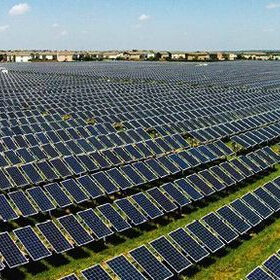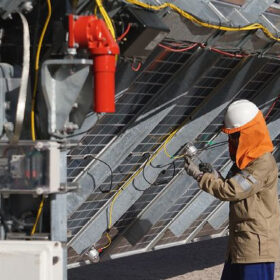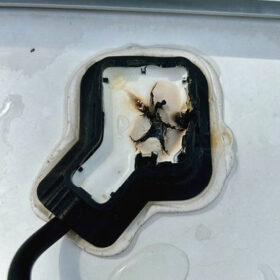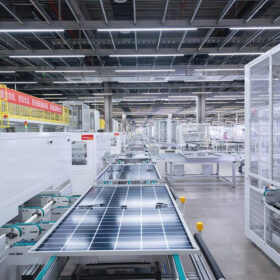Data-driven demand
The world’s reliance on the internet, the shift to cloud computing, and the emergence of AI all fuel demand for more and more data centers. The International Energy Agency (IEA) projects that by 2026, data centers will consume more than 800 TWh annually, more than double their consumption in 2022. Tristan Rayner takes a look at the role that renewable generation plays in powering a digital world.
UP: Let’s get engaged
With Europe’s grids ripe for upgrade and expansion, pv magazine’s Carrie Hampel examines community acceptance of energy infrastructure projects and some of the issues involved. Communication between communities and stakeholders is a two-way street.
UP: Good planning makes good neighbors
A recent study by Berkeley Lab, the University of Michigan, and Michigan State University found that sharing plans for large-scale solar projects with local residents improves the perception of such sites.
The importance of albedo
As bifacial modules proliferate, estimations of albedo are becoming more important and with developers not prepared to install weather stations to assess solar resource, a popular option has become third-party, on-site measurements over periods as short as a day. Is this an acceptable compromise between costly on-site measuring and less accurate satellite data? Everoze’s Stefan Mau discusses the potential benefits and limitations of this approach.
‘I couldn’t believe my eyes’
Quality is paramount in solar applications and never more so than in floating PV installations. The combination of water and electricity harbors obvious challenges and there are many other factors, such as the constant movement of the arrays, that must be considered. Failures at a recent project highlight these issues.
Bigger is better
Larger wafer and module sizes have had a profound influence on module power output in recent years but standardization appears to have taken hold, with no further increases evident in module data, according to Molly Morgan, a senior research analyst at Exawatt, which is now part of the CRU Group.
pv magazine Awards 2024
The first entry window for the pv magazine Awards 2024 attracted more than 100 entries – an outstanding response. It’s clear that our expert jury panels will have their work cut out for them as they choose between so many innovative products and projects. While our jurors deliberate over the first batch of entries, catch up on some of the submissions that have piqued interest among pv magazine editors. If you missed our first entry window, don’t worry, there will be one more chance to submit during the summer.
New solutions for tandem measurement
The year 2024 has already brought major progress with perovskite-silicon tandem solar cells and research organizations are now looking to scale lab results to full-sized devices and mass production methods. A particular challenge is measuring the different characteristics and efficiency of these devices, as Michael Meixner, chief technology officer at German measurement equipment supplier halm, told pv magazine.
Sponsored: Tongwei showcases green manufacturing at Yancheng Base
Tongwei’s new manufacturing facility exhibits multiple improvements in production efficiency and quality control, as the manufacturer highlights recent technological advances in its heterojunction (HJT) product lines.
Getting BIPV into shape
Manufacturing equipment from German supplier Robert Bürkle GmbH is in high demand from solar module producers in Europe and India and the company’s Ypsator laminator line is especially popular. Daniel Klaus, who heads up the Bürkle PV and glass R&D team, told pv magazine about the company’s recently completed installation in France, a solution for building-integrated PV (BIPV), and what it is working on for the emerging vehicle-integrated PV market.










